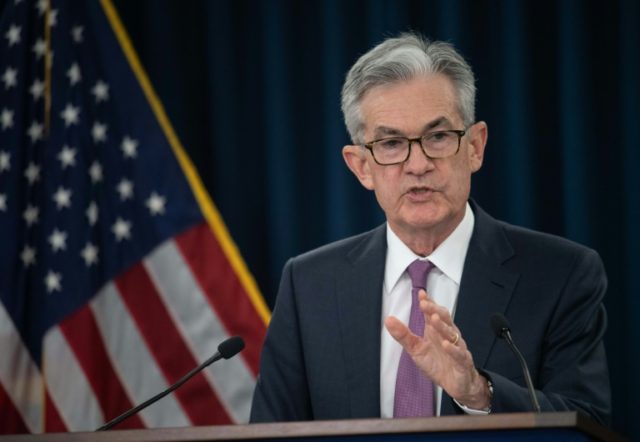The Federal Reserve on Wednesday cut its benchmark interest rate for the first time since 2008, moving in a direction urged by President Donald Trump for over a year.
Fed officials voted eight to two Wednesday on the cut, which will bring the federal funds rate to a range between 2.0% and 2.25%, a quarter of a percentage point below the range set in December 2018. The Fed also said it would cease its balance sheet reduction immediately, two months earlier than it had signaled earlier.
“In light of the implications of global developments for the economic outlook as well as muted inflation pressures, the Committee decided to lower the target range for the federal funds rate,” the Fed said in a statement released at the conclusion of its two-day meeting.
Fed Chairman Jerome Powell roiled the stock market when he described the rate cut a “mid-cycle adjustment” at a news conference following the announcement. He also said that Wednesday’s cuts should not be viewed as “the beginning of a long series of rate cuts.”
Many investors read those remarks as a signal that the Fed might not cut rates as much as expected later this year. Some said it appeared to be at a signal that the Fed’s stance was “one and done,” meaning the central bank would not cut later this year. Financial markets had been pricing in at least one or two more cuts this year. The Dow Jones Industrial Average fell by as much as 478 points.
Later in the press conference, however, Powell seemed to reverse course and indicated that he was not ruling out further cuts. Stocks bounced back a bit but remained lower than before the news conference.
The central bank’s stance has changed rapidly over the course of 2019. At the end of the year, the Fed raised rates a quarter of a point, the fourth hike of the year, and described the stance of monetary policy as one supporting gradual rate increases. Investors viewed this as too aggressive and worried that Fed policy appeared to be on autopilot, blind to recession risks from sluggish growth around the world. Stocks tanked, inflation expectations plummeted, and credit markets appeared to be seizing up.
In February, seeking to reassure financial markets, the Fed held rates steady and began describing its approach as “patient.” In March, it even further, all-but promising not to raise rates this year. Last month, the Fed held rates steady but signaled it would cut rates in the near future.
Since then, Fed officials have said they are worried that sluggish global growth and trade tensions are holding back business investment. They are also worried that inflationary pressures have become weaker this year despite very low unemployment.
Inflation has not hit the Fed’s target of 2 percent on an annual basis since 2012. Fed officials are worried that persistently low inflation will hurt the credibility of the target and lead consumes and businesses to permanently lower their expectations for further inflation. Fed officials believe that expectations of inflation are an important driver of economic growth, investment, and actual inflation.
Although there are many signs that the U.S. economy remains strong, economic growth has fallen this year. Unemployment is very low but it is often a lagging indicator, remaining low until after the economy has sunk into a recession. Fed officials may want to cut rates to pre-empt a more serious downturn that would require deeper cuts to their interest rate target.
Two Fed officials dissented from the cut, preferring to hold the target at the level set in December.

COMMENTS
Please let us know if you're having issues with commenting.